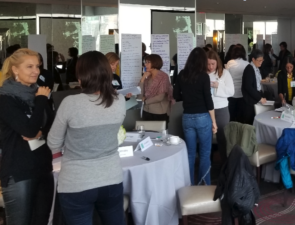Your mind is constantly buzzing with ideas. Rather than being controlled by your every idea, it’s important to curate the best options. But how do you decide which to pick—and more importantly, which to abandon?
While there is no exact formula to determine the best ideas, you can hone your ability to choose wisely through a discernment process of:
1. Identifying Your Options
To make decisions, you need to give yourself options to choose from by creating alternatives. If you are already familiar with the ideation process, you can use the same tools, like brainstorming or mind mapping.
A technique that you may not be familiar with is creating your own luck. Luck is created when you’re open to opportunities rather than passively accepting what comes your way. Being conscious of this, you’ll see that the world is full of opportunities for you.
2. Narrowing Down
Having choices is nice, but more is not always better. With too many choices, you can experience choice overload and default to something you don’t actually want. You should narrow down your choices to avoid this – three or four choices usually suffice.
Sometimes the choices speak to you. Some intuitively stand out while others are obvious noes. Just start crossing things off. You can also create a set of criteria and compare your options to it. Weighing the criterion can help make your decision-making quantifiable. There’s always the trusty pros and cons list, too.
3. Choosing
Perhaps you’ve narrowed down your options and your analysis revealed they’re all good choices! In this case, you need to listen to yourself. You may have strong feelings about a choice without knowing why. Your gut feeling is a culmination of your life experience, and it’s important to listen. Just be careful because it can come from bias from social training.
When faced with hard choices, you need to know your reasoning. Gauge your personal reasons to decide which choice is one you can stand for. Your Odyssey Plan included gauges like “resources available” and “confidence,” but you can include anything that would help you make a choice.
4. Letting Go and Moving On
Even after you’ve made a decision, you may still agonize over it. It’s important to let go and move to be happy. Move on by teaching yourself to want what you get; live with your choices and enjoy them. If your situation allows it, commit to your decision for a period of time treating it as irreversible. This way, your brain synthesizes the chemicals for happiness that it otherwise wouldn’t with a reversible decision.
Similarly, it’s important to let go. Worrying about every opportunity out there delays you from making a choice, or makes you live with constant regret. FOMO only leaves you with unnecessary feelings of dissatisfaction.
A successful discernment process centers on trusting yourself. You have the intelligence and resources to make the right choice. Apply your cognitive intelligence with pros and cons lists and criteria. Listen to the emotional intelligence of your feelings, intuition, and spirit. Get in touch with your body and its physical messages of body aches or visualization. Utilize your social intelligence by trusting the people closest to you. Trust in yourself and forget about FOMO.










